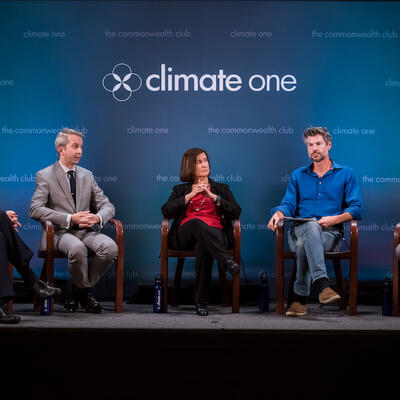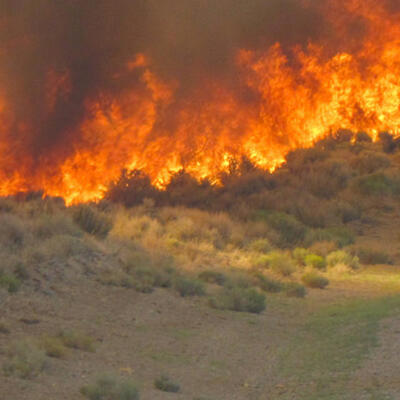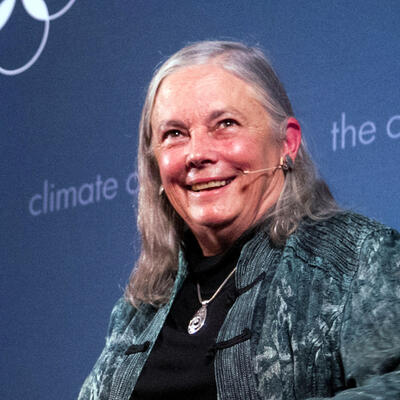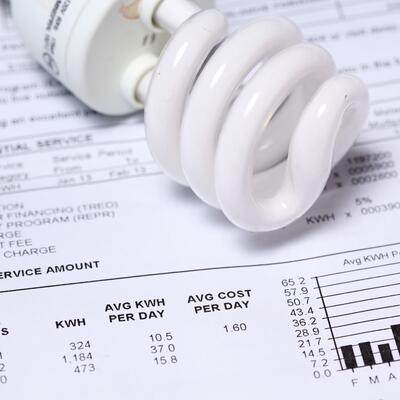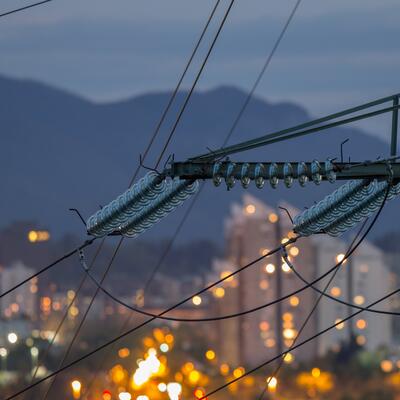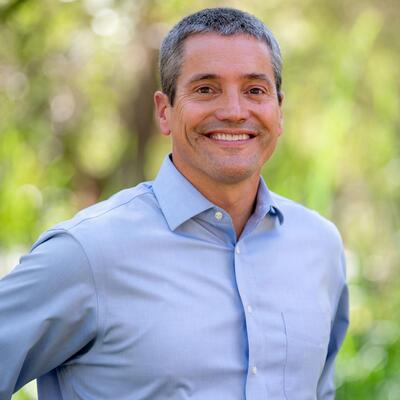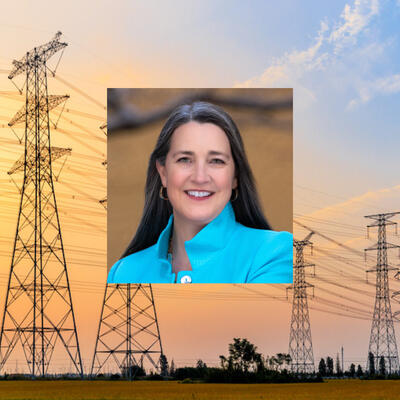
Patti Poppe: Reinventing Utilities During a Climate Emergency
Guests
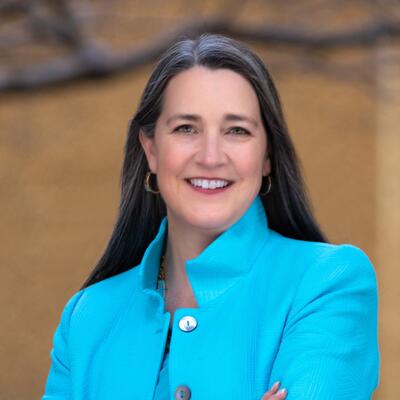
Patricia Poppe
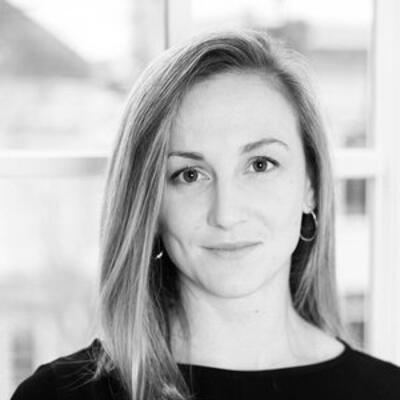
Katherine Blunt
Summary
In 2006, PG&E was perceived to be one of the most progressive utilities in the country. They supported California’s landmark climate law AB 32, and a few years later, quit the US Chamber of Commerce over its opposition to climate action. But recently, a string of self-imposed disasters has damaged the company’s image and public trust. A company gas line exploded in San Bruno, killing eight people, and failure of PG&E equipment caused a rash of deadly wildfires — Butte, Camp, Kincade and Dixie — killing 91 people and burning nearly 1.5 million acres. The company’s 2019 bankruptcy was one of the largest ever in US history and seen as the first corporate bankruptcy driven by climate disruption.
Katherine Blunt, a reporter at the Wall Street Journal and author of the book California Burning, says that while PG&E was convicted of involuntary manslaughter, “Nobody served time. And to consider that, it really speaks to this kind of difficult understanding and convoluted world of corporate liability. This wasn’t a financial crime or you know a white-collar crime that was victimless. I mean these are homicide charges. And it’s kind of remarkable to consider the process the prosecutors had to go through to convict the company on these charges.”
One victim of the Camp Fire, artist Jess Mercer shared her personal experience: “I lived and resided in Paradise, California for a majority of my adulthood. When I was 34 years old unfortunately, on November 8, 2018. My town burned to the ground, consuming 94%. This included buildings, this included businesses, schools, homes, bikes, anything that you can think of that would be in a town that makes up the fabric of a town. Personally, my father's home burned with everything in it. We did not retrieve anything from that.”
As the relatively new CEO of PG&E, Patti Poppe is charged with navigating the company through such epic wildfires, along with disrupted energy markets and lingering public distrust of the utility. Poppe describes her leadership philosophy as “leading with love.” She explains, “I think if more companies lead with love, the world might just be a better place. Companies can be a force for good and trust me, I get a few raised eyebrows as I'm out in the field with my crews and that our power plants and people wonder hey lady what's with this love business. But let me tell you something. We need more human in the equation of the work that we do.”
Though it can be hard to see how a company that the judge overseeing its probation said “has gone on a crime spree and will emerge from probation as a continuing menace to California” could be associated with love. Poppe says, “I think the effects will be felt for a generation at the company of those horrible effects of the wildfires. And I think what we have to do is stay focused on the future and what we can do to make the system safer every single day.”
One of Poppe’s plans for making the service safer is undergrounding 10,000 miles of electric lines, which help prevent the sparks that lead to wildfires. Though, skeptics argue that the undergrounding is a move to improve their cost basis by deploying capital. Katherine Blunt adds, “There’s no question that this is a big capital project on which they will earn a return.”
PG&E is also working with GM and Ford on incorporating power from electric vehicles into homes and the grid, deploying batteries at large power plants, and pushing to change net metering rates that pay homeowners for electricity generated on their roofs.
Related Links:
California Burning
People, Places & Pieces of Paradise
PG&E Will Bury 10,000 Miles of Power Lines So They Don't Spark Wildfires
Full Transcript
Greg Dalton: This is Climate One. I’m Greg Dalton.
In 2006, PG&E was perceived to be one of the most progressive utilities in the country. They supported California’s landmark climate law AB 32, and a few years later, quit the US Chamber of Commerce over its opposition to climate action. Since then, a string of self-imposed disasters has damaged the company’s image and public trust. A company gas line exploded south of San Francisco, killing eight people, and failure of PG&E equipment caused a rash of deadly wildfires named Butte, Camp, Kincade and Dixie, killing 91 people and burning nearly 1.5 million acres. The company’s 2019 bankruptcy was one of the largest ever in US history and seen as the first corporate bankruptcy driven by climate disruption. Later in this episode, we’ll hear directly from the current PG&E CEO, Patti Poppe,about the past, present and future of the utility giant - and the future of fossil and renewable power throughout the country.
But before we get to my conversation with Patti Poppe, I invited Katherine Blunt, a reporter at the Wall Street Journal, to give us some historical perspective on PG&E.
In 2018 the Camp Fire killed 86 people in and around Paradise, CA. Blunt wrote that the County Dist. Atty. Mike Ramsey ordered the transmission tower that ignited that fire to be treated as a crime scene. I asked her why she thought he did that, rather than chalk it up as a natural disaster or accident.
Katherine Blunt: Very shortly after the Camp Fire ignited, there was a PG&E helicopter seen around the tower. So, there were supervisors who'd ordered emergency patrol of that particular line because earlier in the day shortly before the Camp Fire was reported it recorded an outage on that line and they wanted to go see if there were any issues. And the trouble men who they dispatch to go to that tower did see that there was an abnormality in the sense that the part of the line had failed. So, then after that inspection by PG&E a few hours later a Cal Fire crew made their way over there and saw the same thing. Shared their findings with the district attorney and he said well, if there was a problem on this line there's a good indication that it could be implicated in the ignition of the fire and we should take this pretty seriously.
Greg Dalton: In 2020, PG&E pleaded guilty to 84 counts of involuntary manslaughter. Did anyone serve time as they would presumably do if the guilty party were an individual rather than a corporation?
Katherine Blunt: No. Nobody served time. And to consider that, it really speaks to this kind of difficult understanding and convoluted world of corporate liability. This wasn’t a financial crime or you know a white-collar crime that was victimless. I mean these are homicide charges. And it’s kind of remarkable to consider the process the prosecutors had to go through to convict the company on these charges. The thing about a company like PG&E is that it is so large there's a great deal of diffusion of responsibility in terms of you know who manages what, who makes decisions. Who knows what, you know, what do the executives know, what do the middle level managers know? What do the inspectors know. And in terms of you know pursuit of criminal charges. It's on the prosecutors to prove knowledge and intent. I mean that is the basis of this crime and many others. And so, what they were able to prove was that many employees of the company did have knowledge of the risks inherent within the transmission system. They had knowledge that they weren't doing adequate inspections. But in terms of, you know, who made that choice, you know, who did what. That's where that diffusion becomes many layers of plausible deniability. Many layers of decision-making and you know for that reason they didn't feel they could bring charges against any one individual but rather, you know, there were individuals who did know. And who could I mean kind of collectively have intended to do this. You can’t put it on any one person and certainly not some of the executives who are too far removed from that granular decision-making that resulted in the failure of the hook that dropped the wire that ignited the fire. So, it's a complicated space and it's certainly frustrating I think for many observers who want to see some greater level of personal responsibility of those within the company. But from a strictly legal standpoint that's very, very hard to come by.
Greg Dalton: So, it sounds like the company is a serial killer. Maybe that's a little strong but certainly they’ve been prosecuted twice for killing innocent people and it doesn't sound like there's a deterrent of having individual accountability to prevent this from happening again.
Katherine Blunt: Oh, what's remarkable is that to your point, yes, this is the company’s second conviction, second felony conviction after the disaster that killed a number of people. The first was after a pipeline explosion south of San Francisco in 2010 that killed eight people. And in both cases, you know, for these crimes right in the case of the pipeline explosion it was violating the Federal Pipeline Safety Act. In the case of the Camp Fire it was involuntary manslaughter. The statutory maximum fines for these crimes are just a few million dollars. And so, it has almost just from a strictly financial standpoint has next to no effect on the company this size. And so, in both cases prosecutors had initially pushed to try to seek larger fines from the company, but that proved really difficult. And so, ultimately the company kind of the fine aspect of the whole thing is nothing more than a slap on the wrist. And of course, it causes pretty serious reputational damage. But for utility it’s not like the customers have a choice after the company's convicted, you can't say well, I’m not gonna do business with that company anymore. You have to.
Greg Dalton: And it may be hard for many people to fathom these days, but once upon a time I’ve been covering this long enough that PG&E was a highly respected institution. It was one of the most progressive cleanest, most climate-friendly utilities in the country. So, how did PG&E go from being this climate leader and relatively progressive utility to being where they are now to being this twice convicted murderer?
Katherine Blunt: Yeah. Well, that's a really interesting question. And to understand the story holistically I think it's important not to lose sight of the fact that PG&E actually has done a lot of great work on climate issues over the years. PG&E over more than a decade procured a huge amount of wind and solar before a lot of other utilities were doing so. And in doing that helped create the economies of scale needed to drive down the cost of future projects. Now, there's some irony here in a couple of ways. One thing that is ironic is in thinking about climate long-term, the company kind failed to recognize the extent to which the it's in Northern California service territory was changing in part as a result of climate change. So, there are couple of periods of really severe drought that are made worse by climate change that are hotter, longer and really stressed the forests in terms of hydration in creating an environment in which the invasive pests killed millions of trees. So, the consequence of a single spark became much higher over the course of a relatively short period of time. The other thing is that in procuring wind and solar relatively early. Some of these early contracts were pretty expensive. And so, that was a cost ultimately borne by customers and later on created some pressure within the company to keep certain expenses low. And some of those expenses included the kinds of maintenance and inspection work that would make the system safer.
Greg Dalton: How about now, how is the company, you know, they brought in this new CEO, Patti Poppe. What are they doing differently now?
Katherine Blunt: So, after what's transpired over the last two years. First, it really, a fire siege in 2017 that destroyed a lot of the wine country areas in Napa and Sonoma. Of course, the Camp Fire of 2018, the conviction that resulted of that. Those within the company are well aware of the risk, the extent of the risk and what can be done about it in a way that may not have been consistently true over the last couple of decades. So, there's a greater awareness for one. And that’s I think really important. And there's also greater interest in tempting to do anything from, you know, try new technologies and different you know means of managing employees and contractors who need to go out and make sure that lines are kept clear of trees and making sure that inspections are completed on time with the proper modes of, you know, proper inspection modes. So, I think that there's a greater dedication to making sure that everything is done right. That being said, there is it is a huge challenge to make sure that these lines are always cleared of trees in the way they're supposed to. Making sure that contractor stay on schedule. Making sure that, you know, I mean all kinds of things can cause delays and there's very little room for error. Now you mentioned the new CEO. She's been really fascinating to watch as a leader. Shortly after she joined the company last year in July, a tree fell in a distribution line very close to Paradise which was destroyed in the Camp Fire. It ultimately ignited the second largest fire in California history. The company actually took a really long time to respond to the outage that they recorded on the line that caused the fire. Cal Fire was pretty critical of that and its ultimate report on what transpired to allow this fire to blade out of control in the way that it did. And after that she made a fascinating executive decision in which she said, we’re gonna bury 10,000 miles of distribution wire. She basically looked across the service territory and said it’s just too much risk to manage. You know, there's millions of trees. We have to have eyes on them all the time. It’s just kind of like Sisyphus rolling the rock up the hill, right. You clear the tree and it grows back and it has to be done year in and year out. And so, I think theoretically it's a great idea. There's just a lot of challenges associated with it. There's engineering challenges, labor challenges and cost management in a time when the company has to do a lot of other safety work at a time when rates are very high to begin with.
Greg Dalton: I actually live on a road where that undergrounding is happening so I've been watching that happen in a wooded area north of San Francisco. I can see you know how much time it takes and how much money it must be costing, you know, millions of dollars per mile. Skeptics might say that that undergrounding is a good way for utility to make money because it increased their cost basis, they get rewarded by deploying capital. So, is this a money making move on the part of the company. The more capital they deploy, the more they get to increase their rates they put into their rate, right?
Katherine Blunt: That’s absolutely true. So, there’s no question that this is a big capital project on which they will earn a return. Utilities earn an authorized rate of return on large capital investments. You know, building new power lines in some cases, building power plants if they're allowed to do that. Undergrounding, as we’re speaking about right now. They do not earn those returns on what are considered operations and maintenance expenses, which is basically just day-to-day programs, keeping pipelines and power lines running, little projects to go replace certain parts here and there on any given piece of infrastructure. And so, what unfortunately happens is that utilities will maybe, you know, cut corners on O&M where they’re not earning returns and use that additional money saved to invest in large capital projects.
Greg Dalton: O&M being operations and maintenance, that sort of boring stuff.
Katherine Blunt: Operations and maintenance. Yeah. And so, you know in an ideal world, the private interest and public interest can be balanced. It is a hard balance to strike. And not every utility has done it well and PG&E it seems over the last 20 years has done it exceptionally poorly.
Greg Dalton: So, I want to pick up a little bit on the bankruptcy. This is one of the top five bankruptcies in the country just under General Motors bankruptcy, around $70 billion. One of the largest bankruptcies in US history. How did the fire victims compare to the hedge funds and investors?
Katherine Blunt: Man, this was a challenging bankruptcy. And there are interesting winners and losers. And I think you can really argue that the fire victims very much got the short end of the stick in this one. So, what happened was --
Greg Dalton: Because they took stock as part of the deal.
Katherine Blunt: Yeah, I mean, the attorneys negotiating on their behalf ultimately negotiated a deal that did involve shares in the company. There were a lot of financial players involved in this reorganization that, you know, they gained a lot financially or at least something, or at least didn't lose anything. Now, some of the fire victims really lost everything and are still waiting on the full compensation of the value of their claims. So, there was a lot, a lot of victims are really upset. I mean just in principle, having indirectly owned shares in this company. And there’s a certain irony, right. I mean victims of past fires are kind of bearing the risk of future fires by virtue of the fact that the value of their compensation, their prospect for compensation is tied to the value of the company's share price which depends on investor perception of risk. And so, there's a lot of sadness within the fire victim community about this. And, you know, the trust is working hard to you know, liquidate the stock best it can and to make cash distribution payments and to work through just the complexities of managing this trust, but it has been a slow process.
Greg Dalton: How is this process for you writing the story, one of the sorts of great kind of corporate stories of recent years. How was it for you when you connected with fire victims? Was there a time you just like, wow, how was this emotional journey for you? Here on Climate One, I should say we try to bridge that personal and systemic I see you were affected by this.
Katherine Blunt: Yeah, absolutely. Jst having to just really walk through exactly what happened the night of a particular 2017 fire in which one victim who I include, you know, fled his house. And the fact that one thing that really got me was his son, of all things as they are driving away forgot to save a teddy bear that had been in the family for a long time and he just, that's all he could think about. And of course, it didn't survive. Which is like, you know, those little details of you know what people think about in the throes of crisis, especially a nine-year-old child who awoke to his house on fire. You know, I mean there were times in which I was writing and editing that chapter in which I had to take I had to break. I was, I was pretty emotionally touched by that in a very sad way.
Greg Dalton: Sure. So, you quote MarK Noel, who successfully prosecuted PG&E for its role in the 2018 Camp Fire. “We made history,” he said shortly after the Dixie Fire ignited a few years later, just after Patti Poppe became CEO. And he continued, “But we didn't an effing thing.”
Katherine Blunt: That’s Mark for you.
Greg Dalton: To what extent do you agree with MarK?
Katherine Blunt: So, just by way of context. So, you know, Mark was pretty instrumental in prosecuting the Camp Fire case. He worked very closely alongside district attorney Mark Ramsey. And, you know, they did an enormous amount of work and then the company pleads guilty to the 84 counts of involuntary manslaughter in June of 2020. 13 months later, all of a sudden, he's requesting documents again, right. He’s requesting documents related to distribution. And I think that the conviction ultimately on those involuntary manslaughter counts, it changed a few things. I think it helps those who remained with the company after all of this to kind of understand better understand the risks better understand the consequences of their actions. Certainly, you know, it made it so that any executive either coming in who remains probably reoriented their thinking. But I think his overall point is that this sort of conviction doesn't eliminate the risk. It doesn't eliminate the risk.
Greg Dalton: Katherine Blunt is a reporter at the Wall Street Journal and author of California Burning: The Fall of Pacific Gas & Electric -- and What It Means for America's Power Grid. Katherine, thanks for sharing your personal story and the stories of PG&E and the people affected by its fire. Thank you.
Katherine Blunt: Thank you very much. Really enjoyed the conversation.
Greg Dalton: You’re listening to a Climate One conversation about PG&E and reinventing utilities for the climate emergency. Our podcasts typically contain extra content beyond what’s heard on the radio. If you missed a previous episode, or want to hear more of Climate One’s empowering conversations, subscribe to our podcast wherever you get your pods. Coming up, Patti Poppe, CEO of PG&E, one of the country’s largest utilities, lays out her vision for moving the US economy away from fossil fuels to cleaner power.
Patti Poppe: As we transition to a carbon free economy and a carbon free energy system, we do it in an optimized way. And until now I think we've been doing it in a sub-optimized way partly because energy companies like PG&E have been resistant to sort of share the space, we need to share the space.
Greg Dalton:That’s up next, when Climate One continues.
Greg Dalton: This is Climate One. I’m Greg Dalton
As the CEO of PG&E, Patti Poppe is charged with navigating the company through massive wildfires, disrupted energy markets, and lingering public distrust of the utility. The company is undergrounding 10,000 miles of electric lines, working with GM and Ford on incorporating EV batteries into homes and the grid, deploying batteries at large power plants, and pushing to change net metering rates that pay homeowners for electricity generated on their roofs.
In 2016 PG&E was put on probation after being convicted for a fatal pipeline explosion. During that probationary period, the company's equipment ignited fires that killed 91 people. The judge overseeing PG&E's probation said the company “has gone on a crime spree and will emerge from probation as a continuing menace to California.” Crime spree and menace. Those are strong words from a federal judge who knows the company deeply.
In front of a live audience at the Commonwealth Club of California, I asked Poppe what she is doing to change one of the country's most prominent corporate criminals.
Patti Poppe: Well, I came to fix it. I looked on from afar. I was previously a CEO of a utility in Michigan. Actually, in my hometown I thought I had achieved my professional dreams come true. I lived on the street where I grew up. My dad had retired from that company. And I was so proud to lead that team in that company. And I thought I had fulfilled my professional ambitions. Then I kept receiving calls to come to PG&E. I think a lot of people in the industry know me as an operator and one who leads with equal parts heart and head. And I actually think that's what's required for PG&E right now. And so, from afar I watched the challenging situation, the accelerating climate change. The effects it was having on people's lives. The devastation that was caused. I was heartbroken when I observed and watched both the San Bruno explosion and its aftereffects and then obviously the wildfires that have been so devastating here in California. And so, I came to make it right and to make it safe. And I can tell you that the team that I am so proud to lead at PG&E gets up every single day to do exactly that.
Greg Dalton: Last year in the aftermath of the Dixie Fire you pledged to underground 10,000 miles of power lines or about an eighth of the overhead lines in your system. How quickly will that happen and how much will it cost?
Patti Poppe: Yeah, well, a couple things. One, we’re ramping the plan right now and so it'll be less than 10 years. Somebody somehow jumps to a ten-year conclusion but it will be less than 10 years. We’re already making progress on that. This year to date we've already buried more lines than we buried all last year.
Greg Dalton: But it's only like 100 or 200 miles a year?
Patti Poppe: This in the early years and so we’re gonna ramp up to about 1200 miles a year in the next four years. And people ask about the cost, all the time. I want to frame up something. And Greg, I know you understand utility economics better than a lot of people. But it is a little complicated but what I can tell you is today what is expensive for customers is the fact that we spend $1.7 billion a year at PG&E trimming and removing trees from lines. That is an annual expense that our customers are bearing. By undergrounding the lines, though there's an upfront capital cost, the long-term maintenance expense on that and the 99 plus percent risk reduction makes it a very economic choice.
Greg Dalton: there are estimates of about $3 million per mile I guess you're saying that's coming down. So, that gets put into your rate base, right, capital structure. So, that's also good for the business, right, because then you get a return on that capital, whereas you don't get the same return on cutting trees.
Patti Poppe: Well, and it's good for customers, that's who it's good for because it spreads the cost out over a longer time and they get a permanent repair. One of the challenges I discovered at PG&E is our financial structure is much over the years maybe it's because of the challenges the company has faced but it drifted to a heavy expense percentage. The best of the best utilities in the nation are at about 2 to 1 capital to expense ratio because those are better permanent repairs for customers. It's actually the utility is designed to invest in infrastructure. PG&E is at about a .9 which means, for every dollar of expense only $.90 goes to capital infrastructure which means we are bandaiding as a practice as opposed, we’re not investing and people have said PG&E didn't invest in the infrastructure. I agree and we have to fix that. And so, undergrounding actually becomes a very economic part of our re-imagination of the grid.
Greg Dalton: You’ve acknowledged that the company hasn't been in touch with its customers. In 2020 nearly 5 million Americans receive their electricity through a program called community choice aggregation. These are local alternatives to monopoly utilities and they exist in California, Illinois, New York, Ohio and Virginia. They're actively being considered in Arizona, Colorado, and your former state, Michigan. The US EPA says that these local power companies provide potentially lower costs, faster shift to greener power, local control of electricity generation and expanded consumer choice - green local choice. What's your view on these local competitors really?
Patti Poppe: Well, they’re not necessarily competitors. They’re part of the fabric of the way we deliver energy in California. And I do think the big change that's gonna happen for utilities and for energy providers and for the grid is an opportunity as we decarbonize the economy is to have our hometown utilities play a very important air traffic control if you will, in the grid. And because we don't make profit on the sale of energy, so a community choice aggregator doesn't actually affect our profitability. They're not competitors. They actually can be partners. And it might be better for us to deploy our dollars to the grid and allow those community choice aggregators as we've supported deliver energy in a different form. Now, I would argue that the energy that we do produce at PG&E is 93% GHG free, that which we delivered to customers last year, that might surprise people. But what I get excited about is imagining what that grid of the future is going to look like and we need to make sure that we are investing in that. And so, let me just give you an example. I know your family is from Michigan, Greg. And so, maybe at one point or another you traveled along I-80 in Iowa. And so, when you think about I-80 in Iowa it’s a long straight thoroughfare with a few off ramps, a few on ramps and that’s a little bit like what the grid has been for a long time. You’ve got one-way flow of power from big bulk power stations onto that big superhighway and off to some off ramps and then gets down to the little towns that surround the freeway. I imagine the grid of the future to look a lot more like downtown San Francisco. We’re gonna have multimodal energy forms and we need all of it. We need all of it. We need all the clean energy that we can muster. We need to find a way to deliver it with one very important caveat: That as we transition to a carbon free economy and a carbon free energy system, we do it in an optimized way. And until now I think we've been doing it in a sub-optimized way partly because energy companies like PG&E have been resistant to sort of share the space, we need to share the space. And as we share the space we can reinvent and reimagine how we distribute energy in these multimodal forms, but we have to optimize it. It can't be kind of a fixed pie mindset where there's winners and there's losers. We need all of it but there are ways to do it that are the lowest societal cost. And I get pretty excited when I think about kind of being air traffic control for new forms of energy, optimizing the forms that we have today and bringing the cleanest energy system to the people of California at the lowest cost.
Greg Dalton: And our system is to regulate those companies to be reliable and everywhere not to be dynamic or entrepreneurial like reliability: keep the lights on that’s like the base thing not to create new ways of delivering that energy. PG&E is an investor-owned utility though there are some questions now about whether investor-owned utilities are the best sort of capital structure or model, right, given that there’s other models out there. What’s the case for investor-owned utilities when there are some municipals and other ownership structures that have done pretty well serving their customers?
Patti Poppe: Yeah, you know, I used to ask myself this very same question. I spent the first 15 years of my career at General Motors in the automotive industry and then I switched to the utility. So, coming from a very hypercompetitive industry to investor-owned utility. And I remember having to learn the finances and I kept having meetings with these regulatory finance guys and I’m like wait, tell me one more time. I don't understand. Doesn't profit minus expense equal or doesn't revenue minus expense equal profit. They’re like no, not here it’s a different formula. So, I really had to learn all that. And as I learned all of that I realized that though we call them monopolies because we have a monopoly that's designated in a geographic area. We do compete for capital. And an investor-owned utility one of the advantages to the customers of an investor-owned utility is the transparency of our performance relative to peers. So, I can tell you we have to fill out a FERC form one that shows all of our costs and our investors make choices about where to deploy capital based on the most effectively operated utilities. So, for customers there actually is a real gauge of our effectiveness, both from the customer perspective, but from an investor perspective as well. And I do have to just make one pitch for investors. I think sometimes we think investors we imagine these fat cats on Wall Street, you know, raking in the dough at the expense of the little guy. Let me tell you who the utility investor is. It is a mom-and-pop it's probably all the people who are here. Anybody who has a retirement fund is a utility investor. And utility investors do not expect profit maximization, they expect a steady fair return and good safe dividend. And so, from my perspective, that then does not put in conflict in investors and customers. It actually puts them on the same side of the equation both wanting the same outcome. That's well served customers and a well operated utility. And so, for that reason, I think the investor-owned utility model has tons of advantages for the people that we serve.
Greg Dalton: Some people who’ve been in California before you got here would say that PG&E cut corners to divert money to investors that didn't go to safety. And that was partly some regulatory problems, but there’s incentive to cut corners on safety if you’re shareholder driven.
Patti Poppe: And this is where I think our new leadership team is probably gonna have the biggest impact at PG&E. When I went out to the market so I was hired in November of 2020 and I started January 1st. Well, I spent from November 2022 to January 1st recruiting a management team. All of the positions, but for our General Counsel and our chief financial officer were open, which ended up being a good thing. I didn't have to go to this evaluation phase, I could just bring in a great new team. And I was able to attract some of the top industry performers and industry leaders from the best, most well-run utilities in the nation. The people of California should be very grateful that these people came and have signed up for this challenge and this mission because we know what good looks like and what good looks like is customers are always first. There's never a trade-off between safety and profit. I can tell you 100% there is no contest, safety is always first. The safety of my coworkers, and the safety of our communities. And the management team at PG&E is committed to proving that and proving and earning the trust and proving ourselves trustworthy by the people of California that we are here to serve. We know what good looks like and we’re about implementing all of the processes and systems to make PG&E the safest utility in the world.
Greg Dalton: So, I believe you. I want to believe that you hired a great team. What happens when the next fire? Odds are you got a lot of lines and a lot of forests that are hot and dry and there's a lot of fuel there. What happens then to the individuals that you're talking about and to the company. What happens next?
Patti Poppe: Yeah, a couple things. First of all, there are a lot of positive signs about the progress we've already made. We have taken some very significant actions in the last 18 months, one of which was implementing a system called our enhanced powerline safety settings. We call it EPSS. We have activated these settings and engineered our power lines in all of our high fire threat areas. In addition to that additional about 10,000 additional miles adjacent to those high fire threat areas that if anything makes contact with those lines, they deenergized in less than 10th of a second. And as a result, we’ve seen ignitions dropped 80% year-over-year, and this year we’re adding new technologies and new devices to get that 80 closer to 100. And that progress is real and it's happening so that's thing one. But thing two, I'm gonna tell you just a little story. One of our new board members we replaced the entire board two in 2020. One of our new board members is a four-star admiral Mark Ferguson who is the chief naval officer for the U.S. Navy. He's been on a few missions, Greg. And one day when I was coming to terms with risk and the hazards and the trauma that my coworkers have experienced and our customers have experienced. I call them. I just said Mark, I need to know or how am I supposed to think about the risks that exist on the system and the hazard of things going wrong. And he said two things to me that I will never forget and it really encouraged me. One was he said, first Patti, you have to ask yourself, is it safer because you're there? I said, well, yes. It is like, yes, and I know that our leadership team is making a huge difference for the people of California. And then he said, well, in that case real leaders thrive in that environment. So, I was like, oh geez, okay, this is me thriving, alright. And then he said, Patti, every great mission, every great mission that was ever executed in the history of missions and he said you know I have studied every military mission in the history of the world. He said had two key fundamental attributes. One, they had setbacks. And two, they had leaders with resolve and they had leaders who were unwilling to give up the mission because there was a setback.
Greg Dalton: Well, let’s hope that, yeah, we’ll see.
Patti Poppe: You won't be rid of me very easily, Greg, that’s what I’m telling you. We’re sticking here until we close it up and we get the job done.
Greg Dalton: You're listening to a conversation about the past, present and future of the electric grid with Patti Poppe, CEO of PG&E, one of the largest utilities in the country. This is Climate One. Coming up, how does the company answer for the pain it's caused by igniting deadly wildfires?
Patti Poppe: one of the most important things to provide healing in a time like this for the people of Paradise is that they can be safe at home again. That when the wind blows, they know that there will be no risk of a fire due to their power lines and they don't have to have a trade-off.
Greg Dalton: That’s up next, when Climate One continues.
Greg Dalton: This is Climate One. I’m Greg Dalton. Patti Poppe, CEO of California utility PG&E, often talks about “leading with love.” I asked her where that empathy comes from and does it have a place in running a Fortune 500 company.
Patti Poppe: I think if more companies lead with love, the world might just be a better place. Companies can be a force for good and trust me, I get a few raised eyebrows as I'm out in the field with my crews and at our power plants and people wonder hey lady what's with this love business. But let me tell you something. We need more human in the equation of the work that we do. And I think born out of the Industrial Revolution there's a mindset that work is work and life is life. And I believe that people bring their life to their work whether they want to or not. And if we can acknowledge the human experience of people who are doing very mission-critical, purpose-driven work then we have a much higher likelihood of achieving our ambitions. And, you know, we just had several retirements at the end of June. And look, when you say goodbye to your dear friends that you work shoulder to shoulder with to change the world together. You can't tell me that you don't love them. And so, let's just acknowledge that and create a space for people to be human while we do what we do. And I think people are safer then to be themselves to bring their best ideas to make a difference that's gonna last and to hold each other accountable. We had a leadership team meeting earlier this week. And I was talking on the subject of leading with love. When you put your child in the backseat of your car in their safety seat, you buckle the seatbelt you would never pullout of the driveway without buckling your child in because you love them. When you're working on a job site with a coworker and you see them doing something unsafe, darn straight you're gonna say something because you love them. And when you acknowledge before something happens that there is love in this space, then you're gonna do better work and it’s gonna be safer for our communities and for our coworkers.
Greg Dalton: And having that leading with love slogan, some of the fire victims have questioned whether you're leading with love and they've been traumatized in many cases retraumatized when litigation drags on and payments are not delivered as promised. And to be clear you don't control the victim compensation fund; that was part of a bankruptcy deal negotiated with the state etc. I'd like to play a clip and a question from one victim, Jess Mercer, who lost her family home in the Paradise fire.
Jess Mercer: My name is Jess Mercer. I lived and resided in Paradise, California for a majority of my adulthood. When I was 34 years old unfortunately, on November 8, 2018. My town burnt to the ground, consuming 94%. This included buildings. This included businesses, schools, homes, bikes, anything that you can think of that would be in a town that makes up the fabric of a town. Personally, my father's home burnt with everything in it. We did not retrieve anything from that loss. The night of the fire I did receive my father. He's in his late 70s and upon getting him into my safe dwelling he threw his keys out. And in that moment, I realized that that was one of the most parallel things that all of us still shared regardless of where we went is that most of us grabbed our keys, our phone or our wallet. So, I did a call for art thinking that I could give those keys a new home, considering they no longer had entrance into a home or into that bike lock to go for a nice ride through the community or open a diary to tell their secrets that no one else would see. I constructed a Phoenix sculpture out of those keys that were engraved with initials and addresses and smiley faces just to give us some hope that not only were we overcoming a fire for climate change and poor caretaking of our equipment in our area in regards to electrical. But it's also a symbol of unity and it took the thousands of people to come together to give the thousands of keys to stand tall once again. The one main question that I have is the response that PG&E has done, not just in the physical equipment and underground lining is what type of funding are you planning on putting forth for trauma and for programs for the future generations of the community. Those that did stay and their children that were highly affected to lower their traumatic responses moving forward and to actually help propel them to have successful lives. I would just really like to know how that's gonna happen.
Greg Dalton: That’s Jess Mercer, who lost her family home in Paradise fire. Patti Poppe, your response to Jess’ story?
Patti Poppe: Yeah, well first of all, Jess, if you're listening, that's a beautiful work of art and I'm so sorry for everything you've been through. I have a couple of thoughts about this. Number one, one of the most important things to provide healing in a time like this for the people of Paradise is that they can be safe at home again. That when the wind blows, they know that there will be no risk of a fire due to their power lines and they don't have to have a trade-off. And so, the work that we’re doing there to underground the lines was the precursor to us making the 10,000-mile commitment. And I think that is an important part of the healing for that community and the healing of the people. I think Jess asks an interesting question that we've been busy thinking about the infrastructure and what can we do to further assist our communities. We do a lot of work with a lot of organizations in a variety of areas supporting both post-disaster relief during a disaster during a public safety power shut off emergency. I’m proud of how my team shows up in those moments, but I think it's a good prompt for me to think about what can we do to help with the emotional healing of the children who experienced such a traumatic event. It’s hard to fathom. And I'll tell you, you know, Greg, I wear this ladybug on my shirt suit, what have you every day as a reminder -- pardon me.
Greg Dalton: It’s okay. Take a moment.
Patti Poppe: About a girl named Feyla, Feyla McLeod, who was attempting to get out of the Zogg Fire in 2020 when a tree fell on normally operating power lines. And she died that day in the car with her mother. And I met with her family and she loved ladybugs. And I promised her grandmother that we would work every day to make it right and make it safe.
Greg Dalton: And when you’re talking to investors do you think of Feyla?
Patti Poppe: Of course, and investors want us to. Investors’ interests are aligned with our customers and our communities. They want a well-run safe energy provider who is going to be part of not just fixing the infrastructure to not cause fires but to actually thwart the root cause of climate change at its core. So, I think of it like a tree. At the branches we have all our public safety prevention measures, the vegetation management, all the inspections that we do, the extraordinary lengths we go to make the system safe. But the trunk of the tree is the actual system itself and its re-imagination maybe not wireless power, but a lot less wires. Whether they're underground or we’ve got distributed energy that's at the trunk. But the root is the climate and what has changed and we have to decarbonize the system as fast as we can at the lowest societal cost.
Greg Dalton: And speaking about the root cause of climate change PG&E has hydroelectric power. It's pretty green relative to utilities in the country. We’re in a situation where there is a -- what are you doing to use your platform profile within the industry to decarbonize because there's still some clinging to coal that's happening. We’re not gonna get much support from Congress or the Supreme Court right now so it's kind of a moment where industry needs to lead and is industry gonna go faster than it absolutely has to?
Patti Poppe: You know you might be surprised about this. My peers across the industry are extraordinarily committed to decarbonizing the energy resources. When I was in Michigan, and so here I was in a Michigan utility I had total support to retire our coal plants. And we retired while I was there five or seven of our 12, we had five remaining those dates have been set. The company made even more aggressive ambitions to retire the coal faster since I left. The ambitions of the sector are pretty extraordinary and the carbon reductions that have occurred in the nation have been predominantly driven by the transition away from coal in power generation. And in fact, just a few years ago in 2018 the carbon emissions from power generation exceeded that of transportation. That's not true anymore. The greatest reductions have been made in the power sector. So, I think you would find a willing group of very ambitious leaders actively pursuing the decarbonization of our generating fleet nationwide.
Greg Dalton: And those companies actually sat on the sidelines when there is this case, West Virginia versus EPA recently where one state and some Republican governors Atty. Generals, you brought this case industry is kind of set on the sidelines, which –
Patti Poppe: Oh, there were several of us who several of my peers. And I supported the EPA's position and frankly, the ship has sailed. It's already happening.
Greg Dalton: Coal is dying.
Patti Poppe: Coal is dying. It's definitely the economics even changed. There's not a future for coal.
Greg Dalton: We've talked about the underinvestment in the grid and the need to modernize the grid. You know the Camp Fire that killed 80 people was started in part by a part the cost $.56 in 1919. So, what should be done to modernize the electric grid?
Patti Poppe: You know, I stood at the base of that transmission tower and I looked at that C-hook -- actually I was on a cliff that was near it so I could actually see it. I wasn't at the base of the tower, I was up in the hills in the Feather River Canyon. And it occurred to me that those power lines at one time when they were originally imagined and installed were a pathway to prosperity for the people in our rural communities and across the globe, but particularly obviously in California, and now they’re a hazard. And as I stood there you know I thought about the C hook and it felt like a needle in a haystack like how do you find that. But we have systems, we have processes but I learned the concept in lean manufacturing in my early professional years as an industrial engineer, eliminate the hazard. And in that case, that means eliminate the line, challenge the notion that we need every one of those lines, and instead use new technologies. And so, I imagine Thomas Edison coming back today and frankly he'd recognize most of the stuff it would be pretty familiar but not for long. And as we deploy distributed energy resources microgrids, as we underground the power lines as we have resilient redundant power supply that's mobile. When we deploy the full potential of electric vehicles to not just use power from the grid but put it back on the grid when we need it. Flex alerts become a thing of the past, that we have a resilient reliable energy system that is clean and affordable. We actually get to do that right now. We get to do something that we’re disrupting ourselves and it is so exciting.
Greg Dalton: And you come from the auto industry I think one of the biggest positive changes in the last 10 years is the auto industry really getting serious about electrification. So, talk about the role of cars in that transformation of the grid.
Patti Poppe: Yeah, I think they're essential. In fact, PG&E, this is part of the fun of being a California company leader. People want to do business in California. And so, we’ve been able to sign an agreement or make agreements with both General Motors and Ford and we were already doing work with BMW to provide bidirectional charging wherein the vehicle both powers the house and ultimately can power the grid. So, I think a lot of people have heard about the Ford Lightning and Jim Farley, the CEO Ford and I made a big announcement in Houston last year or in March of this year. The first Ford Lightnings would be plugged into the PG&E grid. And we’re excited about that. I call it the triple stack of value that certainly decarbonizing transportation is important, but imagine as a resilience play powering your house and then on a hot summer day it powers the grid. That changes the value proposition of an electric vehicle and it changes the role of the interface between the electric vehicle and our grid. And we get to reimagine that. We in fact are working with Microsoft and Schneider electric to optimize the system that can accelerate the distributed energy resources being optimized. It is such an exciting time for customers to have solutions that they want, the power the way they want it and in a way that when we do it in an optimized way where we have one system in real architecture to how all of these distributed resources interface one another. We can have a much lower societal cost to decarbonizing our economy. It’s like the chance of a lifetime to have that kind of impact on the world and to lead the team who’s gonna lead California through that transition.
Greg Dalton: And a big part of that transition in California is rooftop residential solar. The industry thinks and a lot of people I know and respect think that PG&E is trying to strangle rooftop solar. Net metering was a big debate in the state and the state was about to make a decision put it on hold. So, how do you balance the need to pay for the grid. People like me who have solar use it as a battery we should pay a price, but the PG&E is trying to muscle in and try to really hurt rooftop solar deployment in the companies and jobs involved in that.
Patti Poppe: I am so glad you asked me this question, Greg. Because I want to set the record straight on a couple things. And I know you know this is a complex subject.
Greg Dalton: It is.
Patti Poppe: And just like I couldn't deny climate change with the soundbite it's you know improper it's improper to boil this thing down to a soundbite. So, if you'll permit me, I'm gonna give you a little bit of an extended answer, but let me just share my thinking on this and it might surprise people. First and foremost, the utility makes no profit on the sale of that energy. So, there's no profit motive here. I just need to and that surprises people and people think I'm not being accurate. Trust me I know. And the people who say that we are profit motivated in this and that we’re fighting this because we’re protecting profits are not correct. They are not correct when they say that. So, let’s just -- so, given the backdrop that I do not have a profit motive in this argument, it gives me a pretty interesting vantage point to think about what is best for all customers. And let me make it simple. I'll try and say it in a plain way. Imagine there's two kinds of energy. One is produced when the sun is shining and a different kind of energy that's produced when the sun is not shining. Think of them in buckets. So, we had this bucket here in California that is full and overflowing with energy that can be produced by the sun, and while the sun is shining. In fact, on many days of the year we have so much power that we can't use it all and we have to export it. It's free, negative pricing. So, in that context NEM worked. It was good policy. Did you hear me say that?
Greg Dalton: Mm-hmm.
Patti Poppe: Yes. It was good policy at the time. Today, the price of that energy in that bucket the price to make the equipment to produce that energy has dropped 70%. The incentive actually needs to shift. The incentive needs to fill up this other bucket because the other bucket is empty, not empty, but it’s definitely not overflowing. So, on the same day when you have free power because you have so much of it is overflowing the bucket. The other bucket when you hit 8 PM does not have enough energy to serve the state. We need to invest in storage. We have Flex alerts in the world's fifth largest economy, we cannot meet all our needs every day, that makes no sense. We have still a reliance on fossil fuel. We need to accelerate the retirement of fossil fuels. We still have prices rising when in fact, prices are dropping of the power sources. This is an equation that can be solved but it’s not simple and you don't solve it with single solutions you have to have optimized solutions. And because we are not profit motivated, because we do not have a profit dog in this fight, people would benefit from doing their homework, learning a little more about this issue, not being tempted by the simple soundbites that PG&E doesn't like solar, not true. PG&E loves solar, but we need to make sure we have distributed resources that are balanced with dispatchable resources like batteries. And there's a technology cost curve that's happening in batteries that makes us able to fill that bucket, particularly with the right incentives and we can have a balanced clean energy system that is reliable every day for California but somebody's got to be air traffic control. And the interesting thing about the business construct for a utility, an investor-owned utility is by design from the earliest days we were the ones expected to serve everyone. We are the provider of last resort. We are the ones who have to make sure it's fair. And that is why we don't have a profit motive. That's why it's designed that way so that we can be agnostic to who produces the energy and where it comes from. We can choose and make sure that we would make the best choices for the people of California to have an optimized clean, affordable grid.
Greg Dalton: I’m not sure I buy the not profit motive part by an investor-owned utility but and we can have a whole conversation and we needed --
Patti Poppe: Yes, I should come back. Let’s have another show about that.
Greg Dalton: Net metering whole conversation. Patti Poppe. Let’s give a round of thanks to Patti Poppe for coming here, doing a tough job in an important time.
[Applause]
Patti Poppe: Thank you, Greg. Appreciate it.
Greg Dalton: On this Climate One... We’ve been talking about the past and future of the electric grid with Patti Poppe, CEO of the California utility Pacific Gas and Electric.
Climate One’s empowering conversations connect all aspects of the climate emergency. To hear more, subscribe to our podcast on Apple or wherever you get your pods.Talking about climate can be hard-- but it’s critical to address the transitions we need to make in all parts of society. Please help us get people talking more about climate by giving us a rating or review if you are listening on Apple. You can do it right now on your device. You can also help by sending a link to this episode to a friend. By sharing you can help people have their own deeper climate conversations.
Brad Marshland is our senior producer; Our managing director is Jenny Park. Our producers and audio editors are Ariana Brocious and Austin Colón. Megan Biscieglia is our production manager. Our team also includes consulting producer Sara-Katherine Coxon. Our theme music was composed by George Young (and arranged by Matt Willcox). Gloria Duffy is CEO of The Commonwealth Club of California, the nonprofit and nonpartisan forum where our program originates. I’m Greg Dalton.
